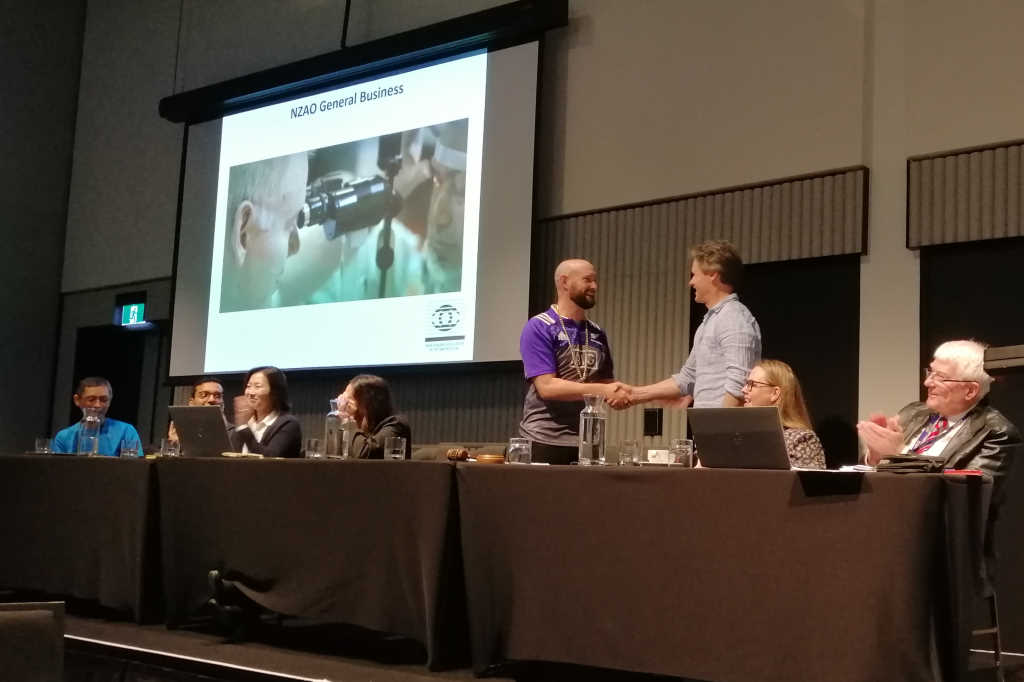Getting a boost with social media
Social media has become a primary marketing tool for businesses of all sizes, across every industry and in every corner of the globe. While it would seem that the healthcare sector, particularly optometry, has been hesitant to get on board, the obvious benefits have begun to sway practice marketing strategies.
Social media is no longer just a social networking platform – approached the right way, it’s one of the most effective communication and marketing tools a business can harness. Social media’s reach offers the ability to market your business to a wider demographic than ever before.
According to Australian-based marketing consultancy Advantage Agency’s director and co-founder Samuel Petrusma, “Social media is a multi-faceted tool that can be used to build brand awareness, generate leads, build customer loyalty, increase your reach, research your audience, attract customers and get customer feedback. Not many marketing tools can claim to be so encompassing while remaining accessible and economically viable for any business.”
Approximately 80% of people use social media today, said Petrusma. “You don't have to be an internet sensation to see success across social media, you just need to start posting.”
Some might still argue that social media isn’t the right tool for an optometry practice – perhaps not everyone that sees your posts will be looking for an optometrist or a new pair of glasses. They would be right, to a degree, but it’s not about the hard sell or the here and now. Social media marketing is a form of ’push’ marketing; for optometry, it’s more about consistency and timing than intention-based. In other words, you might be displaying to people who don’t need your products or services right now, but if you’re consistent, yours will be the first practice to come to mind when they do need an eye test, sunglasses or a frame update.
Social media for optometry is ultimately about brand awareness, increasing traffic to your website and keeping you connected with your patients and the wider community. Not only does it provide interaction with people outside the confines of your practice walls, using multiple platforms allows you to adapt your message to your audience. Instagram is known for catering towards millennials, while Facebook has a wider age demographic. So you have the advantage of being able to tailor your marketing message on each platform accordingly. This can help new patients discover you, keep your current patients engaged and, most importantly, help your practice grow.
Social media tips for practices
- Determine your goals and set your strategy accordingly. Are you trying to sell a product, drive traffic to your website, gain more bookings or simply establish brand awareness? Set a measurable target to evaluate success and plan future strategies around it
- A striking image with each post is likely to engage twice as many people as text alone. If you have a knack for photography, you could use photos taken on your smartphone. Otherwise, purchase stock photos online or post professional brand assets provided by your suppliers’ marketing departments
- Social media is most effective when it’s interactive, so check your accounts regularly and respond to comments, messages or reviews in a timely fashion. Factor it into the day and delegate it to a specific team member
- Share information relating to your expertise. You may think that a post about eye health won’t appeal to everyone, but if your audience see you as an expert in your field, they will be more likely to think of you first when they need an optometrist. Sharing simple tips about how to take care of your eyes, eating for eye health or how to select the right frame can go a long way
- Show off your products by regularly posting images of new frames. Short of a window display or a browser walking through your door, there are limited ways to put your product in front of people. Social media is an excellent way to let your existing and future patients know you have new stock…
- …But don’t be overly salesy with your content. Remember, it’s more about educating and building authority, so if every post is a ‘buy now’, you run the risk of people seeing your posts as advertising and disengaging
- Ask questions to create engagement. It could be as simple as showing a frame in two colours and asking which one is preferred. People who interact with you will feel valued by sharing their opinion; it’s also an easy way to find out what people really think – free market research for your business!
- Build your audience by telling everyone where to find you. Put your Facebook URL, Instagram and Twitter usernames or links on your receipts, website, business cards, promotional materials and collection cards. Encourage your patients in store to leave you reviews, follow your pages and tag you while showing off their new glasses
Social media marketing can be time consuming, but with a clear plan and strategy in place, it can become one of the easiest and cheapest marketing tools you can invest in. There are many apps available to help with timelining and post scheduling too, so you don’t have to feel like a slave to your phone.
“Social media is about being prolific over perfect. In other words, just focus on posting consistently, three to four times a week if you can. Build the habit – you can always improve the quality over time. Social media algorithms look favourably on regular posting, but so will your audience!” said Petrusma.
So, social media is here to stay and if you want your business to progress with the world around it, now is the time to evaluate your marketing strategies.
Disclaimer: Samuel Petrusma is April’s brother-in-law and has helped a number of small businesses improve their social media marketing.
April Petrusma is CEO of Optical Dispensers Australia and a senior lecturer at the Australasian College of Optical Dispensing (ACOD). She was marketing manager for a Sydney-based independent optometrist for more than four years and has degrees in visual communication design, cert IV optical dispensing and cert IV training and assessment.



























